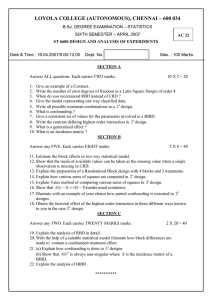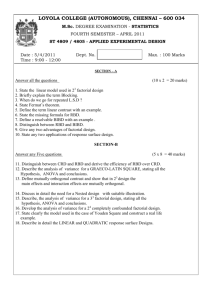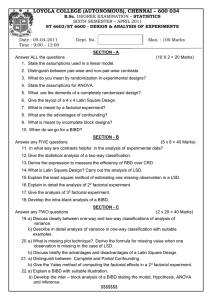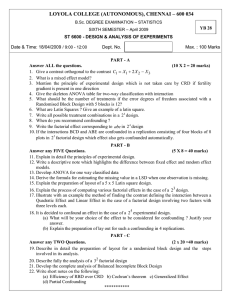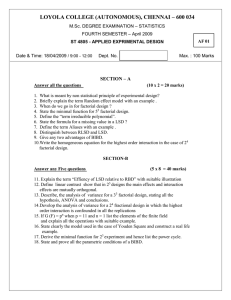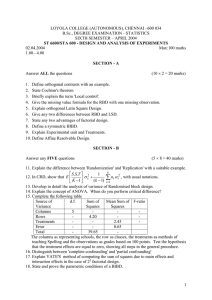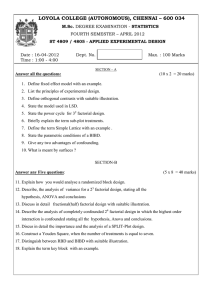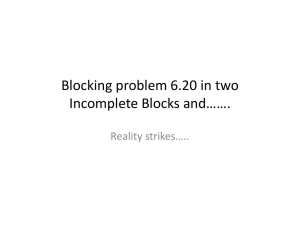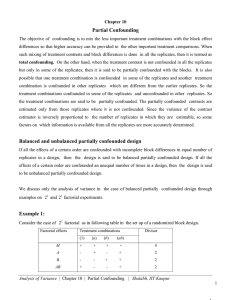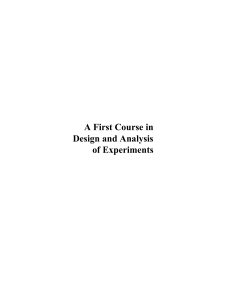LOYOLA COLLEGE (AUTONOMOUS), CHENNAI – 600 034
advertisement
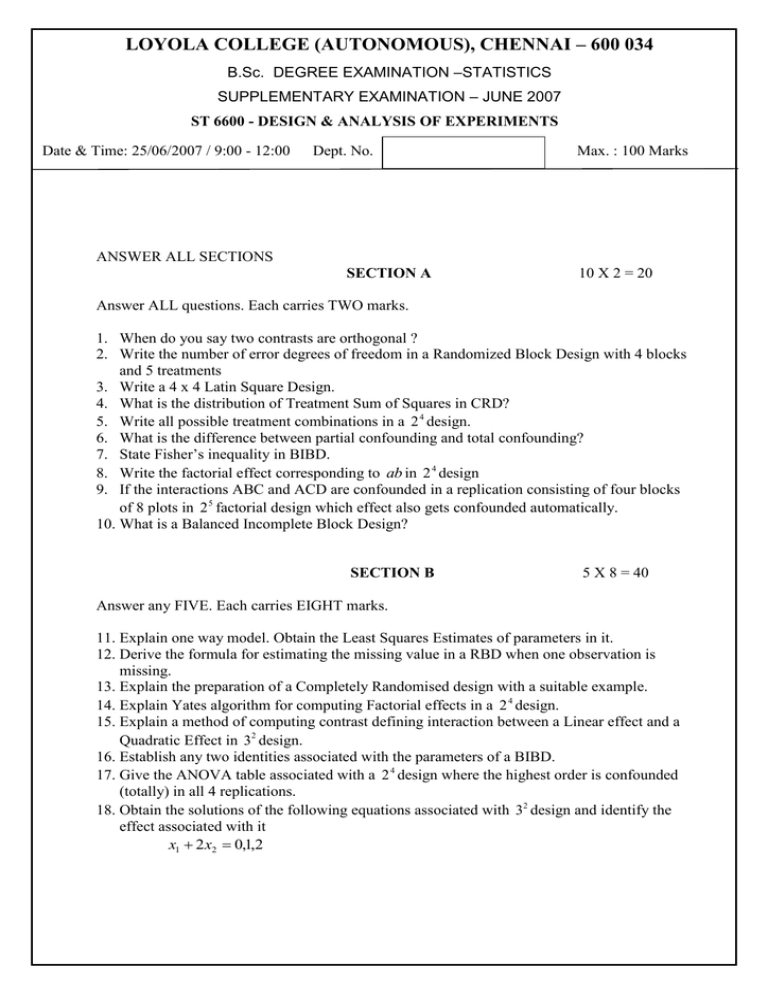
LOYOLA COLLEGE (AUTONOMOUS), CHENNAI – 600 034 B.Sc. DEGREE EXAMINATION –STATISTICS SUPPLEMENTARY EXAMINATION – JUNE 2007 ST 6600 - DESIGN & ANALYSIS OF EXPERIMENTS Date & Time: 25/06/2007 / 9:00 - 12:00 Dept. No. Max. : 100 Marks ANSWER ALL SECTIONS SECTION A 10 X 2 = 20 Answer ALL questions. Each carries TWO marks. 1. When do you say two contrasts are orthogonal ? 2. Write the number of error degrees of freedom in a Randomized Block Design with 4 blocks and 5 treatments 3. Write a 4 x 4 Latin Square Design. 4. What is the distribution of Treatment Sum of Squares in CRD? 5. Write all possible treatment combinations in a 2 4 design. 6. What is the difference between partial confounding and total confounding? 7. State Fisher’s inequality in BIBD. 8. Write the factorial effect corresponding to ab in 2 4 design 9. If the interactions ABC and ACD are confounded in a replication consisting of four blocks of 8 plots in 2 5 factorial design which effect also gets confounded automatically. 10. What is a Balanced Incomplete Block Design? SECTION B 5 X 8 = 40 Answer any FIVE. Each carries EIGHT marks. 11. Explain one way model. Obtain the Least Squares Estimates of parameters in it. 12. Derive the formula for estimating the missing value in a RBD when one observation is missing. 13. Explain the preparation of a Completely Randomised design with a suitable example. 14. Explain Yates algorithm for computing Factorial effects in a 2 4 design. 15. Explain a method of computing contrast defining interaction between a Linear effect and a Quadratic Effect in 32 design. 16. Establish any two identities associated with the parameters of a BIBD. 17. Give the ANOVA table associated with a 2 4 design where the highest order is confounded (totally) in all 4 replications. 18. Obtain the solutions of the following equations associated with 32 design and identify the effect associated with it x1 2 x2 0,1,2 SECTION C 2 X 20 = 40 Answer any TWO. Each carries TWENTY MARKS. 19. Outline various steps involved in the analysis of a 5 x 5 LSD 20. Describe fully 2 3 factorial design 21. Explain the model used in the analysis of BIBD and obtain the least squares estimates of treatments. 22. Write short notes on the following: (a) Missing Plot Techniques (b) Duncan’s Multiple Range Test (c) Linear and Quadratic Effects (d) Confounding *********** 2
